August 6, 2019
Revolutionize Your Road Salt Inventory Management with Low-Cost Cameras and Computer Vision
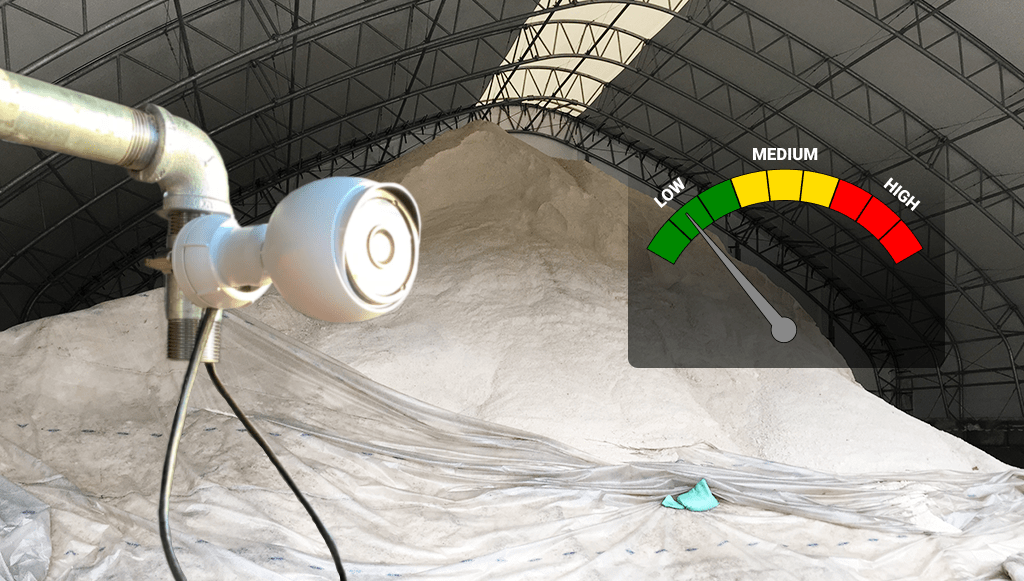
Imagine you are a statewide winter maintenance manager, it is late February, and your state has endured numerous winter storm events.
You and your team are determining if you will have enough road salt to last the remainder of the season. Is your salt inventory management process up to snuff? Can you say with absolute certainty how much road salt is currently stored across the state to make the correct decision whether to buy more or not? If your answer is “no,” don’t worry, you are not alone. This is a challenge that winter maintenance managers have faced for decades.
Obtaining an accurate and up to date snapshot of your entire statewide inventory has traditionally been near impossible. Many maintenance crews rely on marking salt shed walls with lines that signify “If the salt comes out this far, we have about X amount on hand.”
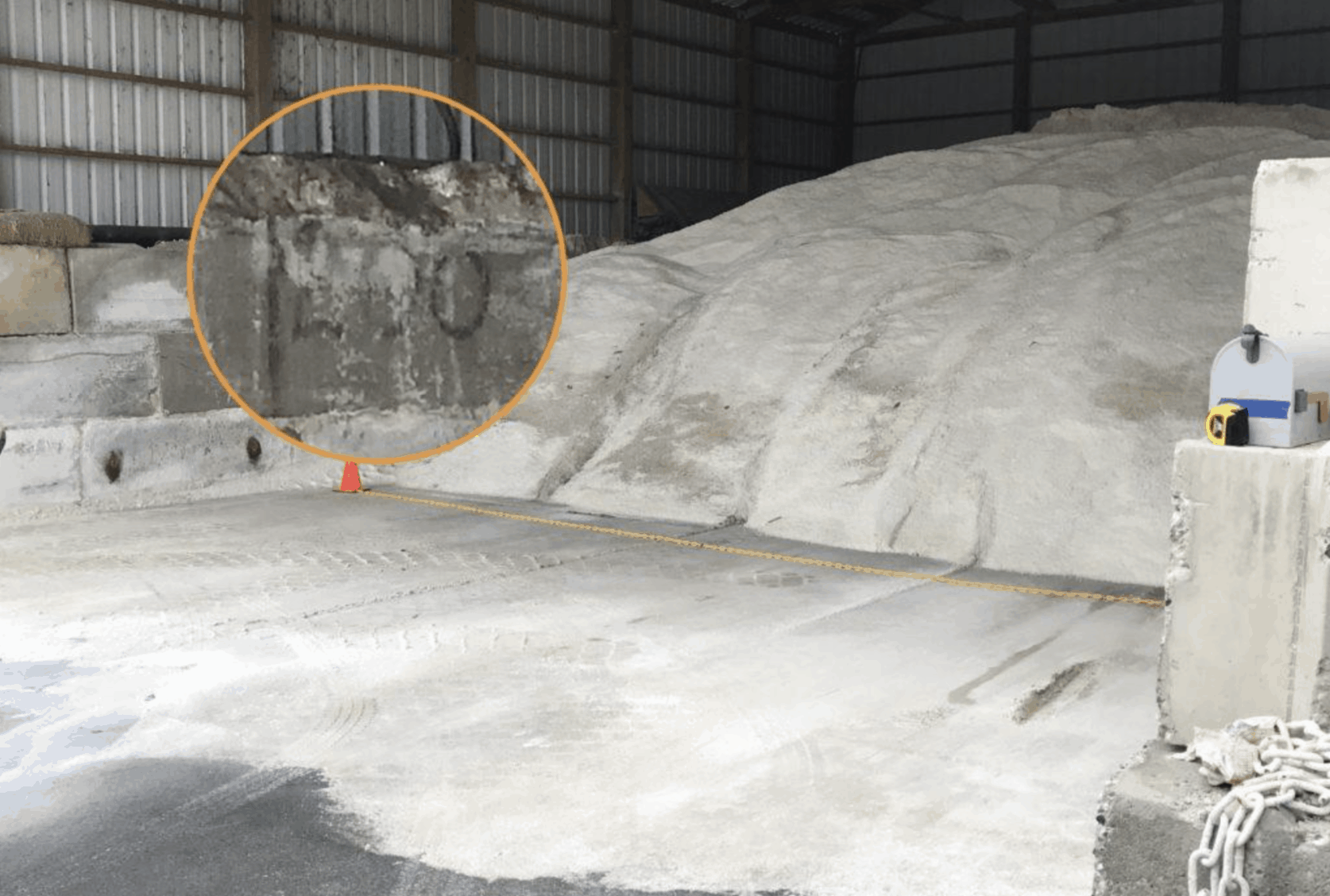
A road salt bunker with a “200” mark on the wall (circled in orange) signifying the pile has 200 tons in reserve at this point.
The most well-organized maintenance crews keep a running truck inventory log with totals of how much material was loaded in a truck and returned after a route. However, these methods are riddled with inaccuracies due to relying on estimates of small inventory changes. Incorrectly estimating by one ton of material hundreds of times over a season will create massive discrepancies with the actual inventory.
As seasons change, so does technology. For the first time ever, road salt inventory can easily be measured in near real-time using low-cost consumer cameras and computer vision. Stockpile Reports made the first major step in solving the road salt inventory management problem back in 2013 with a patented iPhone app that puts a precise, reliable, and easy to use measurement device in every maintenance worker’s pocket.
Stockpile Reports changed everything again in 2019 with the release of Logistics. Stockpile Reports uses low-cost fixed camera systems in warehouses, shipping terminals, and storage yards to automatically calculate inventory levels, replacing the need for manual entry by humans. Winter maintenance managers will no longer have to rely on their crews to perform measurements. Mounted cameras in salt sheds continuously measure road salt volumes providing up to date inventory data across an entire state in a centralized dashboard.
At this point, you may already realize having up to date inventory numbers can drive actionable, data-driven decisions in your operations. In this article, we are going to walk you through all the areas where current, accurate, inventory data can benefit your winter maintenance program.
Confidently Purchase the Correct Amount of Road Salt Prior to Winter
Purchasing road salt prior to winter season is one of the most critical decisions all maintenance managers have to make. Road salt costs between $65-$100 a ton depending on the yearly market. The price and availability mid-winter increases drastically due to limited supply and increased difficulties of transporting salt during winter months. You don’t want to be forced into buying additional road salt mid-winter at over $100 a ton.
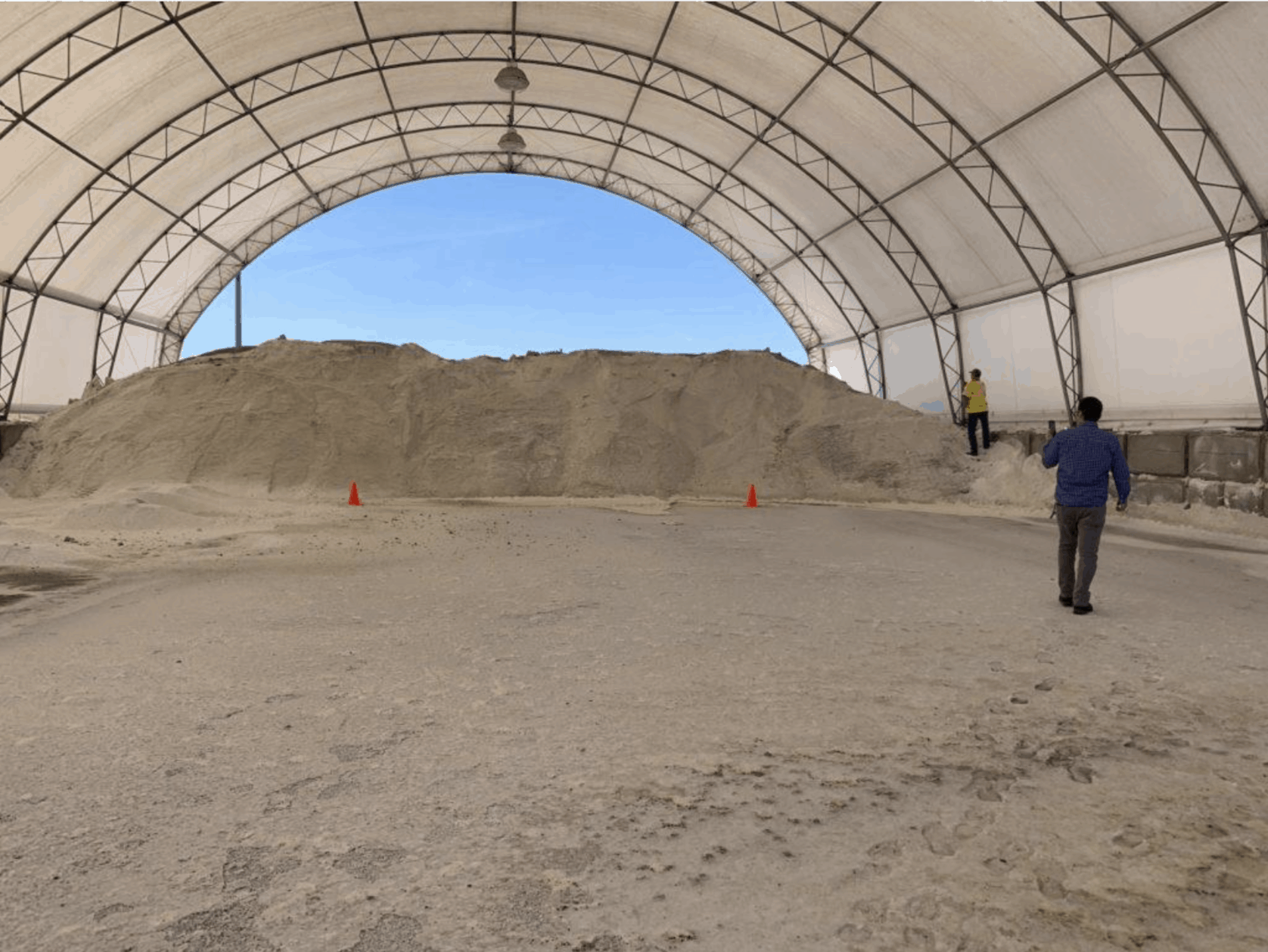
Publically available data shows that states need to buy millions of dollars worth of road salt prior to fall in order to make it through the season. WisDOT alone uses an average of 526,000 tons of salt and 14,000 tons of sand per season statewide. The material costs, on average, will total 20-25% of your entire winter maintenance budget. Knowing your current statewide road salt reserves prior to purchasing material for the upcoming season is paramount. Stockpile Reports provides a centralized dashboard of all your current stockpile levels at each maintenance facility. You will have the total amount of road salt inventory across the state at your fingertips giving you the confidence to order the correct amount of additional salt for each maintenance facility.
Learn More: How Idaho Transportation Department Reduced Inventory Risk with Stockpile Reports
Verify Road Salt Deliveries
Your road salt has been ordered for the upcoming winter season and the materials begin to arrive at each maintenance facility. How do you know the amount you ordered has been correctly delivered? A typical maintenance yard is not equipped
with weigh scales for incoming and outgoing dump trucks. A site may have inadvertently been shorted hundreds of tons of salt. Can you tell the difference between 5,000 and 5,500 tons?
Cameras installed in your maintenance sheds will measure your road salt stockpiles continuously, giving you near-instantaneous confirmation that the correct amount of road salt was delivered at each site. Inventory discrepancies can be resolved prior to the start of winter storm season.
Detect Material Leakages Before They Become A Big Issue
Proper storage of road salt goes far beyond stockpiling the material into any available spot at your maintenance yard. The methodology is complicated enough that it requires its own handbook. Best practices, and in some states the law, dictate that salt piles need to be placed on a concrete pad under a structure. These best practices are to prevent salt from clumping due to moisture, dissolving into the water table, and ultimately disappearing under your nose.
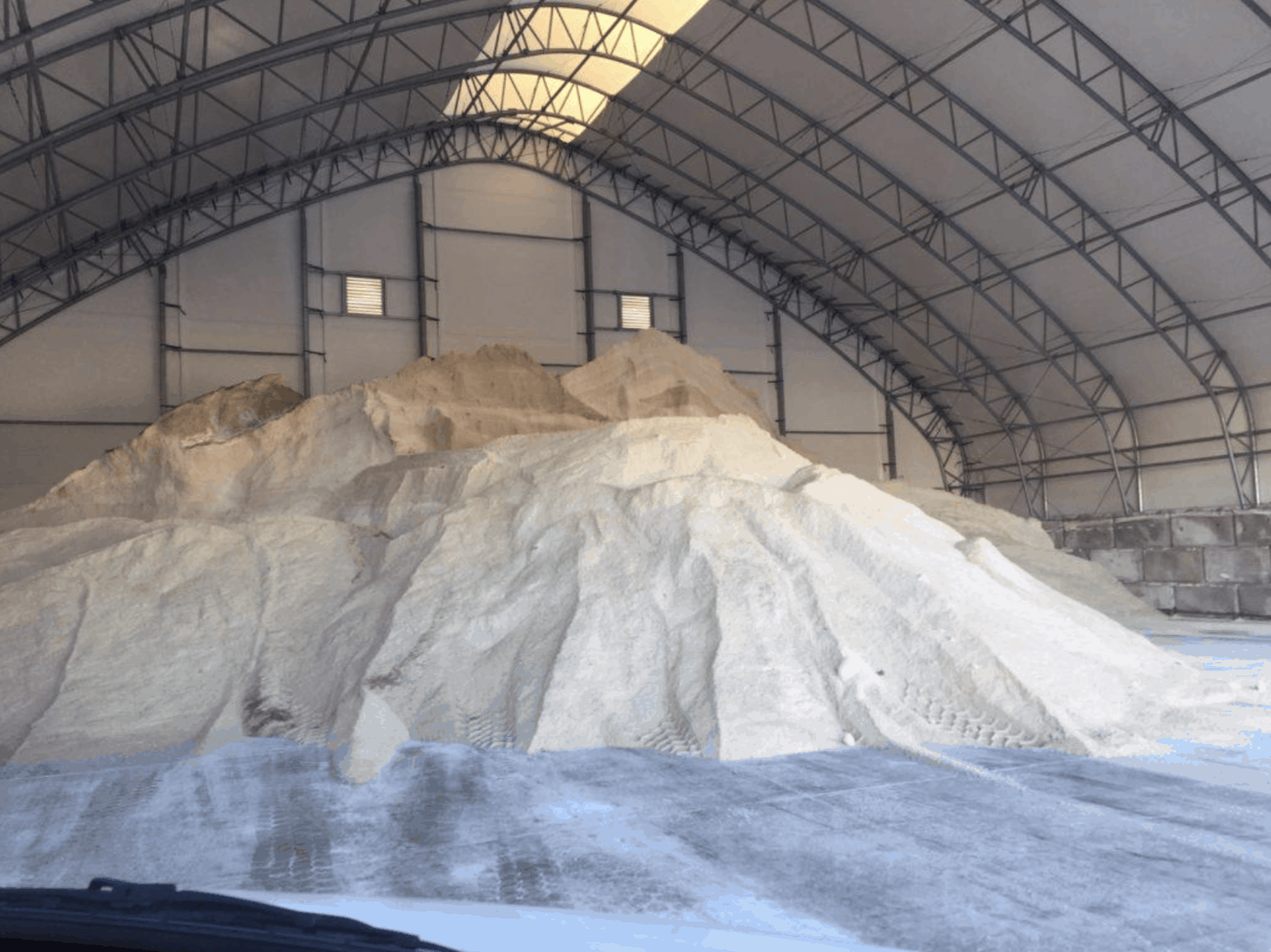
Although structures are built to protect the road salt, sometimes leaks go unnoticed for a long time. It is not until a large amount of salt has dissolved that someone notices the issue. Stockpile Reports’ continuous measurement system will detect when a pile has been shrinking during times of non-usage. This will save your taxpayers thousands of dollars in lost materials and prevent a maintenance site from stocking out sooner than anticipated.
Simplify Storm Event Inventory Sheets and Truck Logs
Traditional storm event material accounting requires loader and truck operators to fill out paper sheets at each stockpile location with withdrawals (loading trucks with road salt) and returns (returning unused road salt after a route). A running tally of withdrawals and returns equals the total amount of material used at a site for a given storm event.
Many issues arise when following the traditional paper accounting process. The first major issue is the fact that logs are stored using paper which is prone to data entry errors and lost paperwork. One lost paper log can result in hundreds of missed tons tracked.
The second major issue is that the logs are based on estimates. A loader operator may enter into the tracking logs that 10 tons have been loaded onto a truck. Was that number derived from bucket counts? Eyeballing how full the truck looks? Without proper measurement techniques, small errors add up over the duration of a storm event.
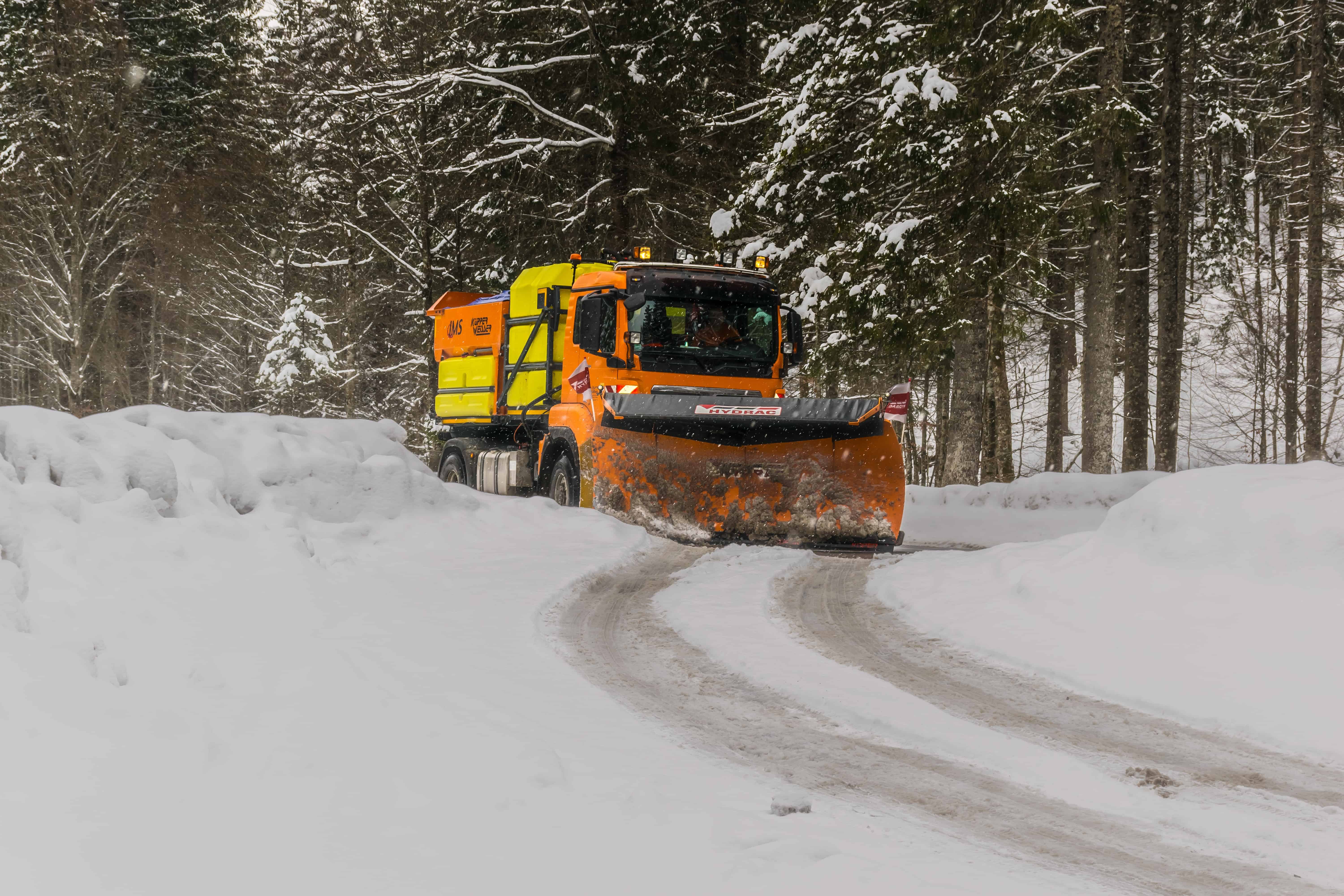
Maintenance managers can simplify storm inventory tracking for their entire team and eliminate accounting errors by using Stockpile Reports’ near real-time Logistics measurement system. Each pile at a maintenance yard is continuously measured, catching every change throughout a storm event. Loaders and truck drivers will not have to spend extra time ensuring inventory is tracked. At the end of every storm event, managers and their team will know exactly how much road salt was used without relying on office staff manually entering paper tickets into spreadsheets and calculating totals.
Calibrate Your Automated Measurement Systems and Fine Tune Your Application Rates
Knowing your application rates for each truck is crucial for distributing the correct amount of salt to a roadway. Some trucks are equipped with automated measurement systems that monitor the rate at which salt is being applied. These systems are usually calibrated once and the truck operators will assume the sensors are always accurate. This is not the case, as over time automated sensors can lose their calibration accuracy. This can lead to distributing more salt than intended which burns through reserves faster.

Stockpile Reports’ iPhone app provides a useful solution to keep your automated measurement systems in check. A truck load can be measured with an app prior to distributing and after. The change in volume is referenced against the automated measurement system data. You may find that the sensors show 700 pounds per acre was distributed but in reality, 800 pounds was used. Maintenance managers can use the updated application rate data to make adjustments to each truck to ensure the optimal salt application rate is being used.
Learn More: 3 Reasons DOTs Should Measure Stockpile Inventory with an iPhone
Enable Cross-Location Inventory Sharing
Winter storms do not affect all areas of a state equally. Maintenance managers do their best to analyze past winter trends to determine the optimal amount of salt for each maintenance storage location. However, the weather is not always predictable. Midway through the winter season a historically temperate area of your state may experience a greater number of winter storms causing a localized road salt shortage. Buying additional road salt for a specific location mid-season is expensive and usually not the best option.
Maintenance managers can reference a centralized dashboard of locational inventory data using Stockpile Reports. Up to date data gives managers the power to determine if road salt can be transferred from nearby locations that have excess material in inventory due to milder weather. The goal at the end of every winter is to maximize the use of salt purchased in the offseason. Having the extra insight on location-based inventory data enables proper transfers of inventory without the risk of accidentally running out material at a maintenance facility.
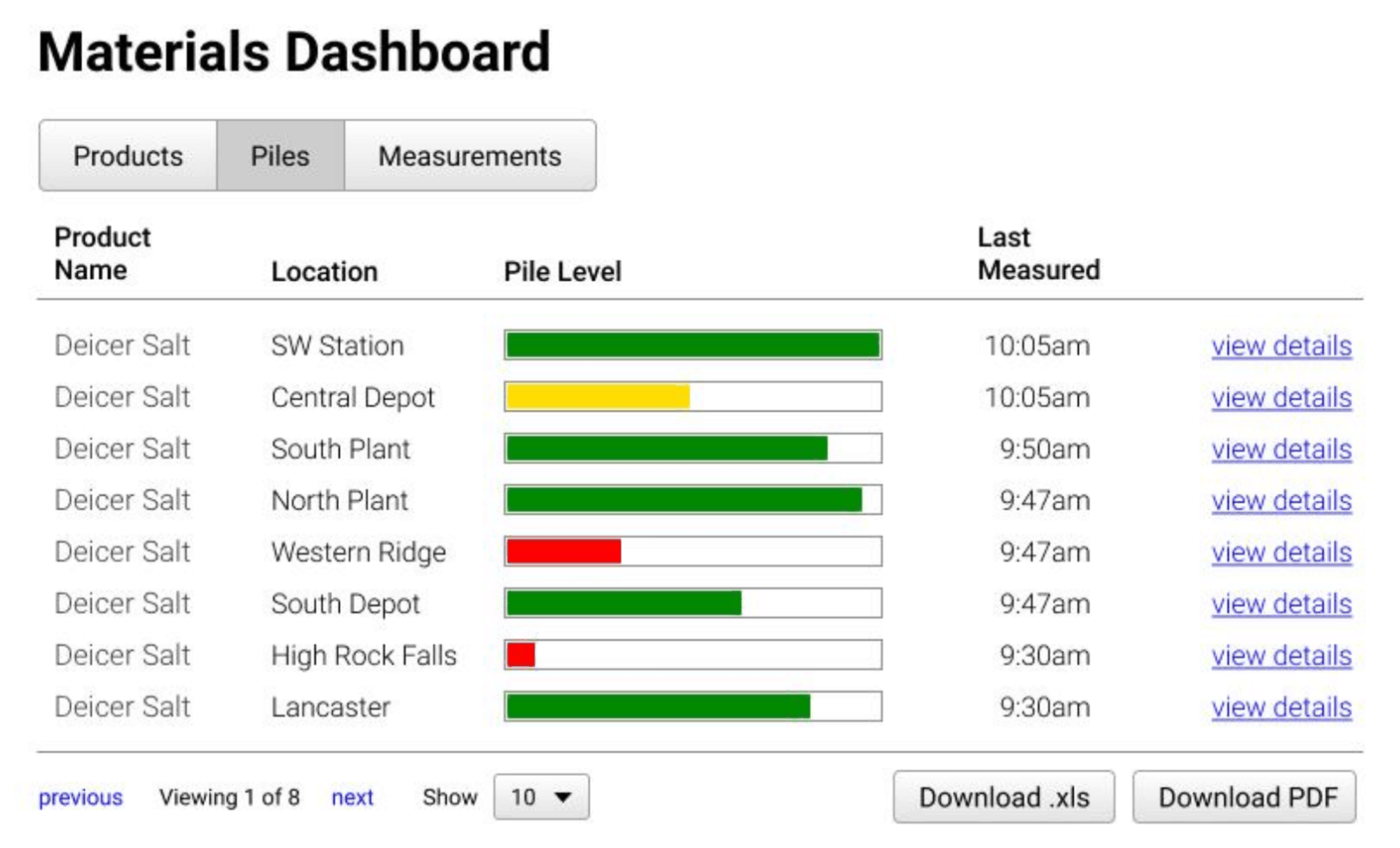
Stockpile Reports’ Logistics Dashboard shows salt levels at each location and at which time it was last measured. This data will empower managers to make correct decisions for transferring excess salt inventory to sites in need.
Tweak Operational Variables to Maximize Efficiency and Build Standard Operating Procedures
Access to near real-time data throughout the winter season arms maintenance managers with data to tweak many variables and track outcomes. Application rate is a great initial variable to change and determine the outcomes. A standard rate of application may have been used for all trucks with variable results. This may be due to inaccuracies in actual application rates. With variables calibrated and controlled, maintenance managers can test for actual outcomes and determine optimal SOPs for their crews to follow.
Measuring salt returns from trucks finishing routes provides insights into the proper amount of salt needed for each route. Overloading a truck increases the amount of fuel needed and wear on the roadway. Testing and tuning variables ultimately lead to greater efficiency.
Automatically Build Historical Data and Improve in the Offseason
Winter maintenance managers compile all of their inventory data at the end of the winter season in order to review and analyze their performance. This process can take weeks of back-office work manually entering data. Stockpile Reports tracks all inventory digitally and builds a historic view in real-time. Managers will have access to more granular data than in the past as well. Instead of pre and post-winter storm event data, managers will have access to measurement data through each winter storm progression.
The highly granular data enables data analysts to determine the actual rate of usage at each location through a storm event and find areas of operational inefficiency. Analysts are also able to forecast material usage more precisely for future winter seasons.
Prepare For Your Best Winter Yet

Summer and fall is the best time to implement a new inventory management program. Unlike most measurement services, Stockpile Reports’ Logistics technology will remove tedious tasks from your busy maintenance crew. Automating your inventory tracking will provide measurable benefits to your maintenance program by removing the risk of incorrect accounting, tuning application rates, and improved data sharing. Each year of measurement data will provide your team with the insights to improve efficiency and ultimately reduce costs for your winter maintenance program.
To learn more, visit us at www.stockpilereports.com
Stay In the Know
Be the first to know about the latest Stockpile Reports news and features.